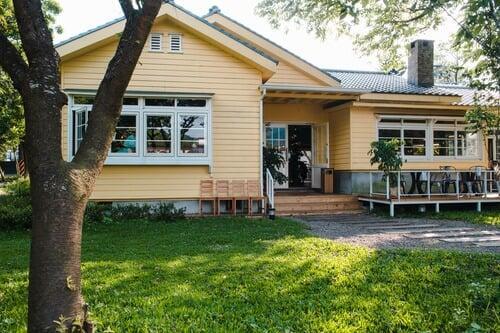
What is an ADU?
An Accessory Dwelling Unit (ADU) is a secondary, self-contained housing unit located on the same lot as a single-family home. Often referred to as granny flats, in-law suites, or backyard homes, ADUs can be detached from the main house, attached, or created through a garage or basement conversion.
Thanks to recent California laws aimed at addressing the housing shortage, ADUs are now easier to build and permit across the state.
Financing Options for ADU Construction in California
Building an ADU requires a significant upfront investment. The good news? There are multiple ways to fund your project, even if you don’t have the cash on hand.
🔹 1. Home Equity Line of Credit (HELOC)
A Home Equity Line of Credit (HELOC) lets you borrow against your home’s equity with flexible, interest-only payments during the draw period. It's ideal for homeowners with solid equity and a strong credit score.
🔹 2. Cash-Out Refinance
This option allows you to refinance your current mortgage for a higher amount than you owe and use the difference to fund ADU construction. Great for locking in new mortgage terms while accessing cash.
🔹 3. Renovation or Construction Loans
Loans like FHA 203(k) and Fannie Mae HomeStyle are designed for home improvements and can include ADU construction. These often require working with approved contractors and detailed planning.
🔹 4. ADU Grant Programs (CalHFA)
The California Housing Finance Agency (CalHFA) offers ADU grants of up to $40,000 to help cover pre-development costs like design, permits, and site prep. These funds do not have to be repaid and are a great boost for low- to moderate-income homeowners.
🔹 5. Personal Loans
Unsecured personal loans are a quick option but come with higher interest rates. They may be useful for covering unexpected costs or finishing a partially funded ADU build.
🔹 6. Local Government Financing Programs
Some California cities and counties offer additional ADU incentives such as fee waivers, pre-approved plans, or low-interest loans to promote affordable housing development.
Benefits of Building a Permitted ADU
Adding a legal, permitted ADU to your property offers more than just extra living space:
Benefit | Description |
|---|---|
| ✅ Rental Income | Earn passive income by renting your ADU. |
| 🏠 Increased Property Value | A well-built ADU can significantly raise your home’s resale value. |
| 👨👩👧👦 Multigenerational Living | Keep family close while maintaining privacy. |
| 🌿 Smart Land Use | Maximize your lot’s potential without buying new land. |
| 📝 Legal Compliance | Avoid fines, future demolition, and legal issues by building a permitted ADU. |
| 🏙️ Community Benefit | Help combat California’s housing shortage with more livable space. |

